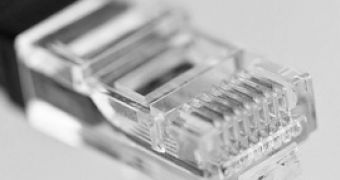Microsoft and Google may be going head-to-head in plenty of areas and there's quite a bit of healthy and some unhealthy competition between the two companies. But it seems that, while the people with the loudspeakers (PR) are throwing punches, the engineers at both companies can come to terms on the practical matters.
Case in point is the work on HTTP 2.0, which has now formally started with proposals to the Internet Engineering Task Force (IEFT). Google presented SPDY as a proposal for the basis of HTTP 2.0, like everyone expected.
Google has been working on SPDY for a few years now and it is being used in the wild. Real-world data shows that the HTTP addition works and speeds things up, this is its main purpose.
Most of the interested parties were in agreement over SPDY and it was even seeing some support from the IEFT prior to the meetings last week.
But just before the group met to decide the fate of HTTP 2.0, Microsoft announced that it had its own contributions to provide. Indeed, at the meeting Microsoft proposed HTTP Speed+Mobility, a set of improvements that focus on, well, speed and mobile access.
The most interesting part though is that Microsoft's proposal is very much based on SPDY. It has a few suggestions and modifications for SPDY as it is today, but it is largely behind it.
On top of SPDY though, Microsoft also pushed for Websockets to be built into the new standard. Websockets is already fairly well supported by browsers today. Microsoft also had suggestions for mobile devices, mostly aiming to boost battery life by decreasing energy consumption.
Microsoft's proposal did have some key differences from Google's approach to SPDY. One is the use of encryption. Google has been looking to make encryption default and obligatory. Microsoft though says it should be optional as there may be cases where it's uncalled for, for example in an internet-connected sensor that will be increasingly common in the coming years, the so-called "internet of things."
Mike Belshe, one of the creators of SPDY, pointed out that Microsoft's proposal was very similar to SPDY and welcomed most of the suggestions.
"I’m happy with the writeup from Microsoft. I view their proposal as agreement that the core of SPDY in acceptable for HTTP/2.0, which should help move the standardization effort along more quickly. They’ve also raised a couple of very reasonable questions," he wrote.
"It’s clear that Microsoft hasn’t done much testing or experimentation with their proposal yet. I’m certain that with data, we’ll come to resolution on all fronts quite quickly," he added.
There are differences, but it seems that all sides are willing to make concessions and move things forward. If everything goes well, HTTP 2.0 should be a reality in a couple of years at the earliest.

 14 DAY TRIAL //
14 DAY TRIAL //